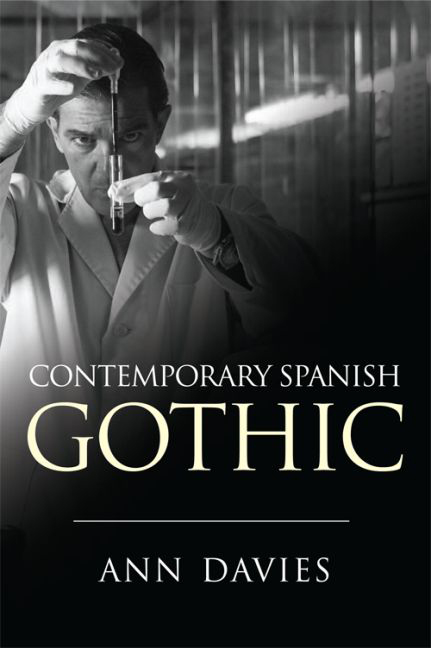Book contents
- Frontmatter
- Contents
- List of Figures
- Acknowledgements
- 1 Introduction
- 2 Heritage Gothic: Goya Biopics
- 3 The Gothic Bestseller: The Circulation of Excess
- 4 The Gothic House: Problematising the National Space
- 5 The Gothic Camera: Javier Aguirresarobe at Home and in Hollywood
- 6 Gothic Medicine: Written on the Body
- 7 Conclusion
- Filmography
- Bibliography
- Index
6 - Gothic Medicine: Written on the Body
Published online by Cambridge University Press: 27 April 2017
- Frontmatter
- Contents
- List of Figures
- Acknowledgements
- 1 Introduction
- 2 Heritage Gothic: Goya Biopics
- 3 The Gothic Bestseller: The Circulation of Excess
- 4 The Gothic House: Problematising the National Space
- 5 The Gothic Camera: Javier Aguirresarobe at Home and in Hollywood
- 6 Gothic Medicine: Written on the Body
- 7 Conclusion
- Filmography
- Bibliography
- Index
Summary
The final chapter takes up another aspect of the debate about the contemporary Gothic, to consider examples of the Gothic body in Spanish culture. Spooner observes that
Contemporary Gothic discourses are […] dual-natured: in their emphasis on surfaces, they may offer a lack of resistance to simulation; but in their foregrounding of the body they offer scope for their use in an entirely opposite way, for the reinstatement of depth into a superficial culture. (Spooner 2006, 58)
In saying this, Spooner suggests the body as resistant to the fears of ephemerality and empty circulation that were discussed in the Introduction. She observes the emphasis on the body in contemporary Gothic and the possibility of the body's reduction to simulacra (63) but also suggests that the grotesque and monstrous body which characterises many recent Gothic outputs can also be understood as ‘an attempt to reinstate the physicality of the body in an increasingly decorporealized information society’ (65). The particular focus of this chapter is both the emphasis on the body in contemporary Spanish Gothic but also the response to it, the efforts to control the body's materiality. One way in which this occurs is through the efforts of medicine to contain it or reshape it.
This medicine is itself Gothic, however, in its simultaneous recognition and repression of the problematic, diseased, disruptive or dead body. Andrew Tudor observes the central position of science as dangerous in the horror film and notes that ‘all mad scientists share one characteristic. They are volitional. Disorder in these movies is a direct consequence of individual scientists’ actions’ (Tudor 1989, 133). The mad scientist causes, and then exacerbates, the supposed challenge he (and it is nearly always he) tries to contain. He is the one who chooses to see the body as a problem which can be countered only by his control, yet the body will ultimately elude the scientist, though at considerable cost to itself. The chapter begins with a study of the body as Gothic excess in Pedro Almodóvar's La piel que habito (The Skin I Live In, 2011), and then considers the displaced body of the actress Belén Rueda who has become strongly associated with Gothic texts.
- Type
- Chapter
- Information
- Contemporary Spanish Gothic , pp. 138 - 169Publisher: Edinburgh University PressPrint publication year: 2016



